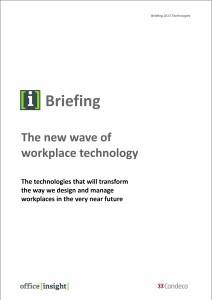To provide the best experiences, we use technologies like cookies to store and/or access device information. Consenting to these technologies will allow us to process data such as browsing behaviour or unique IDs on this site. Not consenting or withdrawing consent, may adversely affect certain features and functions.
The technical storage or access is strictly necessary for the legitimate purpose of enabling the use of a specific service explicitly requested by the subscriber or user, or for the sole purpose of carrying out the transmission of a communication over an electronic communications network.
The technical storage or access is necessary for the legitimate purpose of storing preferences that are not requested by the subscriber or user.
The technical storage or access that is used exclusively for statistical purposes.
The technical storage or access that is used exclusively for anonymous statistical purposes. Without a subpoena, voluntary compliance on the part of your Internet Service Provider, or additional records from a third party, information stored or retrieved for this purpose alone cannot usually be used to identify you.
The technical storage or access is required to create user profiles to send advertising, or to track the user on a website or across several websites for similar marketing purposes.
 Following the recent news that the UK’s construction sector had suffered a significant fall in the final quarter of 2012, better news emerges from the Royal Institute of Chartered Surveyors with a report indicating that the UK construction market is expected to turn a corner this year as the government’s focus on infrastructure starts to generate returns. Chartered surveyors are predicting that output is set to increase in 2013 according to the latest RICS construction market survey. (more…)
Following the recent news that the UK’s construction sector had suffered a significant fall in the final quarter of 2012, better news emerges from the Royal Institute of Chartered Surveyors with a report indicating that the UK construction market is expected to turn a corner this year as the government’s focus on infrastructure starts to generate returns. Chartered surveyors are predicting that output is set to increase in 2013 according to the latest RICS construction market survey. (more…)







 When it comes to the development of meaningful and innovative approaches to the environment, companies are often way ahead of legislation and prepared to do far more than is expected of them by Governments. Best practice is lauded by the WWF in its Green Game changers initiative which has just launched a new report highlighting those organisations that have pushed the envelope on environmental thinking. The latest Green Game Changers Report can be viewed and downloaded here.
When it comes to the development of meaningful and innovative approaches to the environment, companies are often way ahead of legislation and prepared to do far more than is expected of them by Governments. Best practice is lauded by the WWF in its Green Game changers initiative which has just launched a new report highlighting those organisations that have pushed the envelope on environmental thinking. The latest Green Game Changers Report can be viewed and downloaded here.  John Sacks of JSA previews the world’s largest office furniture exhibition which takes place in Guangzhou, China during March. Ignore the shocking website for CIFF, this is an exhibition whose story can be told in numbers, like much that is true of modern China. Over 900 companies will exhibit in a venue with over 210,000 sq. m. of floor space and more than 60,000 people are expected to visit.
John Sacks of JSA previews the world’s largest office furniture exhibition which takes place in Guangzhou, China during March. Ignore the shocking website for CIFF, this is an exhibition whose story can be told in numbers, like much that is true of modern China. Over 900 companies will exhibit in a venue with over 210,000 sq. m. of floor space and more than 60,000 people are expected to visit. The news from the weekend that Axa Real Estate is looking to raise around £1bn to invest in buildings with very long leases has resparked the debate into what sort of lease represents the best value for investors and tenants in these uncertain times. The new fund will target commercial properties with minimum twenty year leases even though investors have to pay a premium for such properties and the majority of occupiers don’t want them.
The news from the weekend that Axa Real Estate is looking to raise around £1bn to invest in buildings with very long leases has resparked the debate into what sort of lease represents the best value for investors and tenants in these uncertain times. The new fund will target commercial properties with minimum twenty year leases even though investors have to pay a premium for such properties and the majority of occupiers don’t want them. 


 The latest wheeze from the Government as it looks to ‘streamline’ the public sector’s back-office functions including purchasing is to create two Independent Shared Service Centres as part of the Next Generation Shared Service Plan. Pick through the usual gobbledegook and acronyms and what you will find are some significant developments as The Cabinet Office seeks to save up to £600 million a year in administration costs.
The latest wheeze from the Government as it looks to ‘streamline’ the public sector’s back-office functions including purchasing is to create two Independent Shared Service Centres as part of the Next Generation Shared Service Plan. Pick through the usual gobbledegook and acronyms and what you will find are some significant developments as The Cabinet Office seeks to save up to £600 million a year in administration costs. 








January 8, 2013
What does 2013 hold for the facilities sector in the UK?
by Mark Eltringham • Comment, Facilities management, Furniture, Property, Workplace design